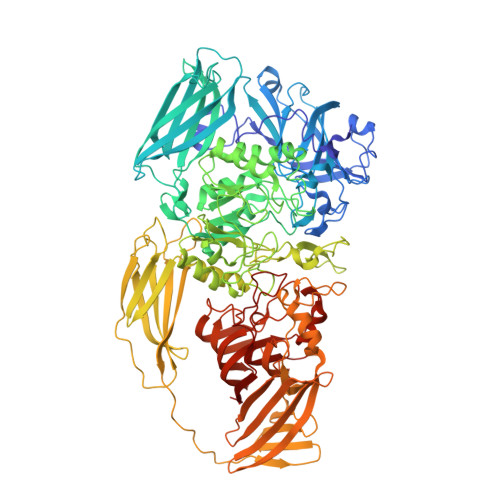Reversible lattice repacking illustrates the temperature dependence of macromolecular interactions.
Juers, D.H., Matthews, B.W.(2001) J Mol Biol 311: 851-862
- PubMed: 11518535
- DOI: https://doi.org/10.1006/jmbi.2001.4891
- Primary Citation of Related Structures:
1HN1 - PubMed Abstract:
Flash-freezing, which has become routine in macromolecular X-ray crystallography, causes the crystal to contract substantially. In the case of Escherichia coli beta-galactosidase the changes are reversible and are shown to be due to lattice repacking. On cooling, the area of the protein surface involved in lattice contacts increases by 50 %. There are substantial alterations in intermolecular contacts, these changes being dominated by the long, polar side-chains. For entropic reasons such side-chains, as well as surface solvent molecules, tend to be somewhat disordered at room temperature but can form extensive hydrogen-bonded networks on cooling. Low-temperature density measurements suggest that, at least in some cases, the beneficial effect of cryosolvents may be due to a density increase on vitrification which reduces the volume of bulk solvent that needs to be expelled from the crystal. Analysis of beta-galactosidase and several other proteins suggests that both intramolecular and intermolecular contact interfaces can be perturbed by cryocooling but that the changes tend to be more dramatic in the latter case. The temperature-dependence of the intermolecular interactions suggests that caution may be necessary in interpreting protein-protein and protein-nucleic acid interactions based on low-temperature crystal structures.
Organizational Affiliation:
Institute of Molecular Biology Howard Hughes Medical Institute and Department of Physics, 1229 University of Oregon, Eugene, OR 97403-1229, USA.
















